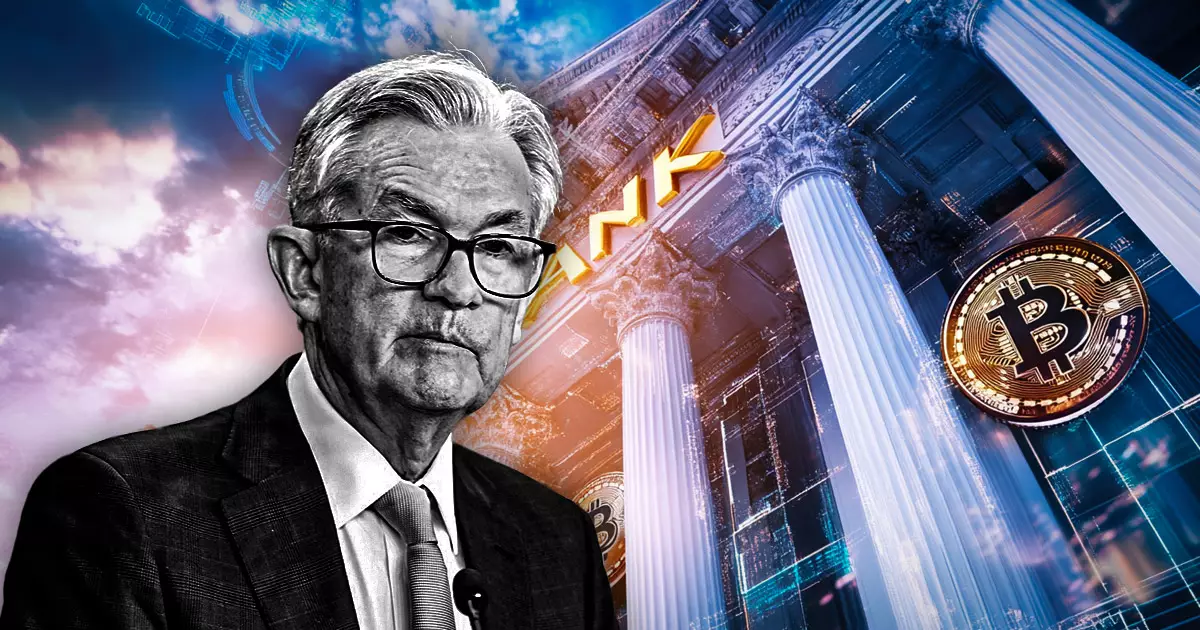In recent discussions, Jerome Powell, the chairman of the Federal Reserve, elaborated on the central bank’s approach to cryptocurrency within the U.S. banking system. During a House committee meeting on February 12, Powell emphasized that the Fed is not opposed to banks offering crypto-related services, provided they handle these activities with a clear understanding of their inherent risks. This stance underlines the importance of risk management in an evolving financial landscape, where innovation and regulatory oversight must coexist.
Powell’s remarks suggest a cautious yet open attitude towards financial institutions engaging in cryptocurrency activities. He mentioned that there are numerous crypto-related activities occurring within Fed-regulated banks, particularly in custody services. The chairman highlighted that these activities are conducted under a framework ensuring that both the banks and the Fed maintain awareness of the operational risks involved. This balance is crucial, especially in light of recent financial turbulence linked to crypto-friendly institutions.
The discussion surrounding the Federal Reserve’s regulatory measures has been partly fueled by the collapse of two notable banks in March 2023: Silicon Valley Bank (SVB) and Signature Bank. These banks faced significant challenges due to a combination of factors including an insufficient diversification of assets and a bank run that led to a rapid decline in deposits. These incidents raised questions about the risks inherent in banks that have substantial exposure to cryptocurrency markets, such as SVB’s connections with Circle, which held significant reserves in USD Coin (USDC).
While Powell acknowledged these occurrences, he refrained from directly linking them to cryptocurrency. Instead, he attributed their struggles to exposures related to long positions in depreciating securities and emphasized the need for vigilance in managing unsecured deposits. Moreover, Powell revealed that the Fed is actively reassessing the investment strategies of medium-sized banks that bear similarities to SVB and Signature Bank. This proactive approach aims to mitigate the risk of widespread financial contagion stemming from the cryptocurrency sector.
Powell’s reassurances that the Fed does not intend to infringe on the banking relationship with cryptocurrency also reflect a broader regulatory philosophy that values innovation while prioritizing safety. He acknowledged that the threshold for banks engaging in crypto activities has been heightened, a decision that stems from the novel nature of the cryptocurrency market. This cautious scrutiny is designed to ensure that banks are equipped to manage the complexities and risks associated with digital assets.
Furthermore, Powell’s recent statements suggest that there is no intention of the U.S. issuing a central bank digital currency (CBDC) during his tenure as chairman. This declaration indicates a preference for analyzing existing financial products and regulatory frameworks before introducing new digital solutions, highlighting the need for a careful and informed approach that considers the wide-ranging implications for the financial system.
The Federal Reserve, under Powell’s leadership, appears to adopt a balanced regulatory framework that encourages responsible innovation in the cryptocurrency space while maintaining stringent risk management protocols. As the intersection of traditional banking and digital currencies continues to evolve, ongoing dialogue and analysis will be essential to ensure that the financial system remains resilient against potential disruptions. The Fed’s role, as articulated by Powell, will focus on fostering a stable environment where cryptocurrency can thrive without jeopardizing the broader banking ecosystem.

